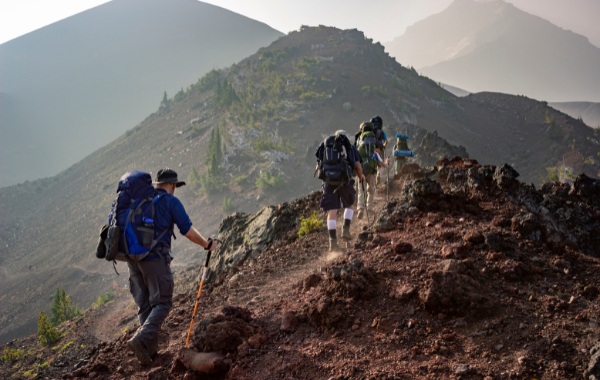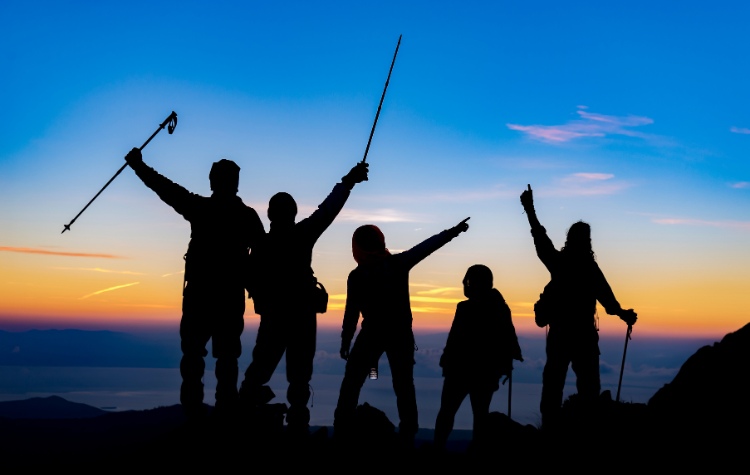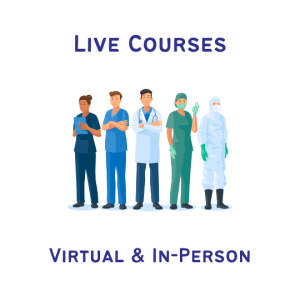
Published June 20, 2023 | Updated September 13, 2023
By Dawn Barlow
Dawn is a doctor who recognises that being a doctor is not the be-all and end-all to life.Working as a locum enables her to fulfil her passions of performing, writing, making videos, podcasting, travelling and, most importantly… having fun!
So if you’ve joined us from our previous post, welcome! If not, it’s about getting your first expedition as a doctor, so if you’re new to expeditions, it might be worth starting there. But if you fancy skipping the instruction manual or you’ve got your first expedition and you’re getting ready to get going on your first trip, let’s get started!
These places are rough, and there’s a reason it’s called a challenge. Hundreds of years ago, these trips used to be near impossible, hence why plenty of people died in the past and multiple museums documenting their failures, and occasional successes, have been erected. What’s the difference between 500 years ago and now? Equipment, knowledge and technology.
Maps, weather reports, lifejackets, GPS trackers, radio equipment… The list goes on and on! Obviously, you’re not going to have all of this stuff lying around at home. So what’s important to take and what isn’t?
We’re going to split this article by types of expedition as they’ll all differ slightly and also generic items that you should pack for every trip!

IMPORTANT TO NOTE
What’s important to note, and may affect your packing decision slightly, is that you almost definitely won’t be carrying your large luggage bag. Please check with the company beforehand though!
Instead, you’ll be carrying a day bag and depending on your environment, another animal or vehicle will be taking your luggage.
Think camel, dog sled, van, horse, or 4×4 car…
But that doesn’t mean you should start packing everything in your sight! It does however mean that you don’t need to worry about cutting down on the essentials. Most people when packing for trips, not just expedition trips, will try to cut weight by getting lighter, cheaper and smaller large items.
This might include buying a smaller and lower season sleeping bag, or packing fewer layers or a smaller coat. Please don’t make this mistake! See below for one of the biggest expedition mistakes I’ve made…
Furthermore, you will also be able to leave some items (e.g. travel pillow or dirty clothes) at the hotel you stay in for the first night. You’ll likely return to the same place after the challenge is complete.
Medical Expedition Equipment Essentials
It doesn’t matter what kind of expedition you’re going on, you’ll need these!
Sleeping Bags
If you didn’t know already, there’s an extremely vast range of sleeping bags. These range from as cheap as hospital blankets to basically buying a whole new bed. These are calculated by “seasons” ranging from 1 season to 5 seasons (I know this technically doesn’t exist but I didn’t make it up!) The 5th season refers to extreme cold, beyond winter levels of cold. Think -20 Celsius!
When you get into the 5 season sleeping bag range, you’re talking big money (~£200)! These are only really worth the money if you’re doing polar expeditions, in Antarctica or Alaska for example. For most trips, a 4 season sleeping bag will suffice. For reference, I’m quite a hot person. And sadly when I say hot, I am actually referring to my inner thermostat, rather than my sexiness…
I went up Kilimanjaro with a 3 season bag, but I wouldn’t advise only this. I subsequently needed to borrow a sleeping bag liner, and as we ascended, the air became thinner and the nights became colder, this was again not enough. Overnight the temperatures can drop to well below freezing. I think the lowest was -7 Celsius. I then had to borrow 2 water bottles from the lovely guides, who I will forever be grateful to, filled with hot water. These acted as little hot water bottles (which is also why you need non-insulated water bottles).
You may usually be a hot sleeper, but you’re at altitude your body starts to struggle with basic functions. You require more energy, and you may struggle to produce heat which is what is required for a sleeping bag to heat up. Sleeping bags reflect your own heat back to you, so you need to provide the initial energy to get this process going!
If you’re going anywhere “extreme,” packing light on necessities is a bad idea. This might seem obvious to some of you, but I’ve been guilty (albeit at aged 16 on my gold Duke of Edinburgh practice expedition) of skimping on essentials.
Sleeping Bag Disaster: True Story!
I literally didn’t take a sleeping bag… I can’t even comprehend the stupidity of this now, but 16-year-old me thought this was a great ingenious idea!
I took a sleeping bag liner thinking this would be enough for the mild Brecon Beacons and although we had beautifully hot weather for April, in the daytime, the nighttime chill was overwhelming.
The combination of this with the static nature of sleeping was a recipe for disaster and I spent the whole night wondering if I could wake my friend up next to me and ask to crawl into her sleeping bag or whether I would just die of hypothermia. My body had gotten to the point of not shivering (usually a sign of a body temperature less than 32 degrees Celsius) Alas, neither happened, but the next day I reported my idiocy to the leader who gave me a stern telling off, and I can say that since then, I’ve learnt my lesson!
So, now we’ve gotten that embarrassing story out of the way… Let’s continue with the rest of the essentials for any expedition trip!
Storage
Large backpack
Now I’m talking big. Kinda like those “gap yah” bags. You’re going to water a 70-100L bag for all of your items because this bag needs to contain your sleeping bag, clothes, sleeping mat and all the rest of the stuff on this list!
Yes, you can strap some to the outside, but realistically do you really want your bed hanging on the outside of your backpack, only to be either knocked off by airport staff or drenched by the rain? I think you know the answer to that…
So everything needs to fit inside! At least until you get there and then some further organising can occur!
Day Bag
Your day bag size will ultimately depend on how long you’re trekking (or cycling) for and also what you have in your cupboard at home!
Personally, I have a 30L Deuter bag which I use for basically everything—Dartmoor walks, cycling trips, weekends away, short trips to Europe, treks up enormous mountains—in my wardrobe, waiting to go! So if you already have something appropriate, I wouldn’t go out and buy a specific one just for these challenge trips.
Please don’t go taking those drawstring JD bags up though…
But when thinking about getting a bag for trekking, what’s important?
- Hip/waist strap
- Chest strap
- Airflow down back
- Adjustable straps (the more adjustability, the better)
- It’s comfortable and fits you! (Ask at your local outdoor shop for help with this)
Choosing the Size of Day Bag
While you don’t want to lug around a humongous bag on short day trips, you need to make sure it’s big enough to carry:
Dry Bags
Imagine I’m screaming this at you right now: DRY BAGS ARE ESSENTIAL.
DO NOT rely on your bag to be waterproof!!!!!
I don’t care if it says it is. I don’t care if you have a waterproof cover. I don’t care if you’re going somewhere hot. It literally doesn’t matter!
It can rain anywhere or you can fall into water or water gets spilt onto your bag. Or maybe even a camel urinates on your bag?! Liquid can get into your bag as easily as an old man with a catheter gets a UTI.
I hate to be obnoxious, but I did struggle once to not give my friend the I told you so face when we climbed a mountain in Vietnam (Fansipan). It poured it down with rain THE WHOLE TIME (not an exaggeration) and she didn’t dry bag her clothes. It’s fair to say she had a bit of a miserable night in cold and damp clothes and there was some essential spooning involved!
I would recommend having several of these; you literally can’t have too many dry bags! I would recommend (if your budget allows) having one the size of your bag, several smaller ones for different sets of clothes (e.g. for different days or for different clothing items – underwear/tops/bottoms…) and one for technology. You could also have one for food items unless they are already packaged and for toiletries (mainly toilet roll whose function is essentially useless when wet!)
They’re super lightweight and something I will NEVER travel without. If you’re on a budget, a few bin bags would also do the job, although not fully waterproof. They’re easily ripped and need to be double-wrapped, so take a few just in case!
Dry bags also trap air really well, so they can also act as a floatation device if required, a cushion or pillow, a protective air bubble to prevent food or delicate items from getting squashed or they can also vacuum pack your clothes. This is essential with so many uses!
Water Containers
We all know that water is the essence of life. You don’t quite realise how luscious it is until you’re parched from sweating in the Sahara desert for 8 hours and have been continuously sweating what feels like 500mls every minute!
Water can simultaneously be your best friend, that you want to contain, but your worst enemy that you’re dying to avoid, all at the same time!
Now unlike dry bags, you probably can have too many water containers… Because on these treks you’re provided regularly with water. I recommend these 3 water bottle containers for different reasons, and here they are:
1. Water Bladder
Get the largest capacity you can find – 2 to 3 Litres:
- Easy access to continuous water. A necessity in these environments, where you’re using enormous amounts of energy.
- Stopping to get your water bottle out of your bag will not only be time-consuming but also quite annoying for you and your teammates.
- A continuous supply of water to your body will invigorate it rather than glugging around in your stomach, making you feel sicker than you might already feel, and then dumping out the other end pretty rapidly.
2. Insulated Water Bottle
This is something I wish I’d known about beforehand as I almost froze to death drinking basically ice water in the pitch black at nearly 6000m. I don’t think I’ve ever been more cold!
At the bottom of a mountain, the climate can seem temperate. However, with altitude comes the cold and, at most mountain summits, freezing temperatures. Your water bladder’s tubing will have frozen and water in a non-insulated water bottle will be ice cold and maybe even starting to freeze. An insulated bottle, although heavier, will allow you to take warm/hot water up there and drink this on summit night.
Conversely, imagine you’re in the baking hot throbbing sun of Africa. What do you want more than anything in the world? You start to see a mirage, a glimmer of hope! But alas, there’s no oasis in this desert. Thankfully you remembered to pack your insulated water bottle and you have cool fresh drinking water in your backpack! Silly you! How did you forget?!
3. Non-Insulated Water Bottles
You might think, I’ve got 2 already, why on earth do I need another one?! Good question, but as eluded to earlier, these bottles can act as an amazing hot water bottle overnight.
- They also act as a backup bottle, should you lose or break your bladder and/or your water bottle.
- This bottle could also be collapsible so as to save on space, but I’d be wary about using a collapsible water bottle with hot water in it overnight, just in case you roll over to a wet surprise!

Daily Essentials
Suncream
C’mon guys, I feel like, being medics, this one speaks for itself!
Remember those cold days out in the Alps where sunburn felt almost impossible? And then you’d come back, your face red and exuding more heat than one of those heaters grannies use to warm their feet, and your lips dry and chapped.
Where did it all go wrong?!
Well, you didn’t put enough sun cream on.
And at altitude, this effect is amplified. You’re closer to the sun, out for longer days, and it’ll likely be cold so you won’t notice the sun burning your face until it’s too late!
Go for factor 50, in one of those small travel sizes, and don’t forget your SPF lip balm while you’re at it!
Sports Sunglasses
“Sports sunglasses…? What’s so special about them? But Dawn, I’ve got some really funky ASOS glasses that I want to take with me! I’ll look so stylish in all the pictures!” I hear you say…
You’ll want to rethink that when your regular sunglasses are sliding down your face every time you bend forwards! Or worse…!
Sports sunglasses have SPF built into the lenses, but their main selling points are super sun shading ability (as they generally have darker lenses), shatter-proof lenses (so shards of lens don’t go into your eyeball if you fall over) and grippy rubber arms, which are super comfortable I might add!
These grippy rubber arms prevent the worst from happening. Because there’s nothing worse than your sunglasses either falling off your face or the opposite, gripping your head so tightly that you aren’t sure if you’ve got a headache from dehydration, altitude or from the glasses!
Walking poles
You may feel a bit like a 60-year-old couple going out for a hike up the village hill with walking poles. But you’ll barely see anyone without them in these extreme environments.
They’re a godsend for going up and down hills, but I even used mine in the shifting hot sands of the Sahara desert. Whether you’re walking through snow or sand, having four points of contact with the ground is super stabilising and helps you cover distance more efficiently.

Hat
It doesn’t matter where your destination is, a hat is a must! If you’re going to altitude or a polar location, you’ll need a dense and insulating hat to keep the heat in. Conversely, if you’re in a hot location, a sun hat will reduce your risk of heat exhaustion or stroke or sunburn!
Face covering
Similarly, I would also deem a face covering a necessity. And no don’t worry, we’re not going back to those horribly traumatic covid days!!! I’m talking about a neck scarf. Even in warm environments, places like the Sahara are prone to sudden sandstorms, meaning you need your face protected.
The sun can also be a little problematic, BUT your biggest enemy is the wind! Windburn will dry out your skin, making it itchy and painful. You can get separate buffs for cold and hot weather climates, which I recommend.
Comfort Items
When we’re in an unfamiliar environment we often crave home. So taking a little bit of home with you can make the difference. This could be a small keepsake such as a small toy, a favourite snack or a photograph from home.
Personal Items List
Toothbrush
I think this is quite self-explanatory. You should be brushing your teeth at least twice a day, and in the great outdoors the rule is no different! But your teeth can do without your fancy Oral B for a few days. Electric toothbrushes are just extra weight, and the battery of your electronic items drains faster in cold weather, which would likely render it useless anyway!
Shoes
After a long day on your feet, the last thing you want to do is put on your hefty boots, do up their 145 lace hooks and trudge around the camp. This is where sliders/crocs come in. These are literally a godsend. Because as you gain altitude, the smallest of tasks render you cardiovascularly compromised.
That includes going to the toilet, doing up your sleeping bag, putting on your coat, zipping up your tent and putting on your shoes. Tiny and menial tasks, which you wouldn’t even usually bat an eyelid at, become extremely effortful (I wish I was exaggerating!)
So at the end of the day, having a light and comfy pair of shoes that you can slide on and off without getting out of breath and that will also air your stinky feet out, will make all the difference.
I also recommend taking a third pair of shoes. Comfortable and casual trainers. These are the ones you’ll wear to and from the airport and around the hotel. Those “in-between” shoes for the situations which are not quite heavy boots, but also not quite Crocs/sliders territory! They can probably stay at the hotel when you leave for the trip as you won’t use them on the challenge itself.
Snacks
Snacks. The things of memes. But these are no joke. They will be your ally on any difficult challenge trip! If you’re anything like me, you’ll relish the opportunity to eat decadent snack bars without the guilt. My favourite snack was Snickers bars, something that I would rarely indulge in at home!
Make sure to take a multitude of snacks of different varieties to keep things interesting when your appetite starts to dwindle. Average around 3/day for cold trips. Even if you don’t eat 3 every day initially, you’ll likely also get given extra items and you can then save some of the excess for the hardest night of all… summit night!

Rechargeable battery packs
It goes without saying, that whilst you might find a plug socket on Amazon, you certainly won’t find one in the Amazon rainforest! And what would we do without our beloved devices?!
Did you know that batteries lose their charge more quickly in cold weather? So at night, keep them at the bottom of your sleeping bag, and keep your phone and camera batteries as close to your body as possible when climbing during the day, for example in the inside pocket of your coat.
For a seven-day round trip up Kilimanjaro, I took two battery packs and managed to get onto the second one. However, I did have GoPro batteries to charge so realistically if you’re only charging a phone and a head torch, one would be adequate for minimal use.
Charging Cables
Charging cables to charge phone, battery pack, camera/camera batteries and head torch or light. If they all require the same cable, only take one, you don’t need to take 4 micro-USB cables.
If your one cable breaks, I would bet my GMC registration that someone else will have the cable you need and will be willing to lend you it. People tend to pull together and be nice on expeditions!
Camera
I’m not sure if this is essential, but it was for me! I have a multitude of cameras – iPhone, GoPro and DSLR camera. And although I took my phone, it was off for most of the time. I used my GoPro, it’s literally made for these environments.
I didn’t feel it was worth it to take my very expensive and potentially fragile DSLR camera with me too. Although that didn’t stop some people, and if you don’t have a GoPro and want something better than your phone to take pictures on, then you can of course take a light camera with you inside a padded camera cube, inside of a dry bag!
Local Currency
Whilst I didn’t intend on spending any money whilst out on the trip, in reality, that’s often not the case. You’ll find a local souvenir that you fall in love with. You’ll want to try a local delicacy. Or you may even fall in love with the locals and want to tip them (which is common courtesy at the end of the trip, although not expected of the medic or leaders). The guys on the trip moved me so much that I wanted to give them my money!
Emergency Personal Items
Whistle
You likely won’t use this, but do you remember the end of Titanic? (Spoiler)
Rose is freezing cold, Jack has sunk to his death and a lifeboat passes by. Rose, too cold to shout, grabs a nearby corpse with a whistle and gets blowing her chilly little lungs out! Alas, she is saved!
Now imagine you’re Rose! Probably changing your mind about buying that whistle now, aren’t you?
Headlight
You’re going to need some hands-free lighting for the rumblings around the tent in the middle of the night and potentially for summit night! This is a necessity for any outdoor adventure. I advise taking a rechargeable one that you can recharge with your battery pack. AA or AAA batteries are liable to cold damage and you won’t find any extra out in the wilderness!
It’s also a good idea to take a tent light which you can hang from the ceiling with a little hook. If you need to charge your headlamp, then at least you have an alternative light source in the meantime!

Foil Blanket
Very cheap and lightweight and very useful in an emergency. It’s not only used as a heat reflector but also can double up as a shelter or a signalling flag for help.
Printed Insurance Documents
This one seems kind of obvious to me… If stuff hits the fan, it’ll be easier for you to find paper documents rather than sifting through your phone with no signal or internet and maybe even no battery. Keep these in a sealed waterproof pouch (e.g. a dry bag) along with your passport.
Medical Personal Items
Regular Medication
Take enough medication with you for double the trip length just in case. You may also need to take a doctor’s note or prescription with you depending on the medication e.g. morphine/codeine or injectables, such as insulin.
Analgesia
There will be medications in the medic bag, but I wouldn’t rely on these. Some companies may not be happy with you using them for personal use.
Sudocrem
Sudocrem, if you’re not well acquainted with it already, will become your best friend. They sell tiny little travel pots as well! It’s basically a very thick barrier cream for nappy rash, but when you’re wet or sweaty all day, some chaffing may occur. In which case, slap some of this stuff on and you’ll be loving life again!
Baby Wipes
Showers are non-existent in these places and everyone just accepts the stench and general lack of hygiene. However, baby wipes are amazing for a quick little armpit, face and “other bits” cleanse. They might also be useful to remove any stale Sudocrem, mud or insect repellent!
Blister Plasters
I was lucky enough not to have to use any in my boots, which also worryingly were not broken in! Some others did not fair so well, however. So having a supply of these is essential! I would recommend taking enough for 2 per day. It’s slight overkill but you can never have too many and they’re small and lightweight.
Alcohol Hand Gel
Although you’re encouraged to wash your hands before meal times, if you need an emergency bush poo on the walk, you’re not going to have those facilities. So having some sanitising hand gel in your bag will prevent any potential stomach bugs. A common symptom of altitude sickness is diarrhoea, so a baby wipe, Sudocrem and hand gel combo may be required!
What Not to Take on an Expedition

Where to Get Your Essentials
Outdoor Store
Sports Shop
Pharmacy
Your Own GP/Family Doctor
Travel Clinic
Supermarket
Online
Questions to Ask Your Trip Provider:
When planning your medical expedition, here are some questions you can ask to make sure you’re bringing the right kit:
1. Do you have a kit list bespoke for this trip?
Some expeditions or medical expedition courses will provide you with a list of essentials (as well as a list of what they will be supplying) that is unique to the location, conditions, and activities they have planned.
2. What season sleeping bag do I need to bring?
Expedition trip providers will have experience of the temperatures to be expected overnight in all of the places you’ll be visiting – get their opinion on which sleeping bag to bring.
3. What do I not need to bring?
Some providers will bring plenty of tents, sleeping bags, and sleeping mats, as well as other essentials included in this list. Make sure you’re not doubling up by checking beforehand.
4. Is food included and/or cooking utensils provided?
Your provider may bring food and/or cooking utensils with them for everyone on the trip but don’t assume that this will be the case.

A Note to End
There are a few things I want you to take away from this:
- Wet = not good. Dry = happy and warm! That basically applies to everything except the inside of your water containers!
- Don’t buy cheap
- Pack for your specific environment
- Sudocrem and baby wipes are your best friends
Remember, you’re the doctor. These people are trusting you and the trust may start to waiver if you show a lack of preparation.
But in all honesty, if you forget something or something breaks, the guides, locals and your teammates will be more than happy to help you out.
But it pays to be prepared and self-sufficient!












